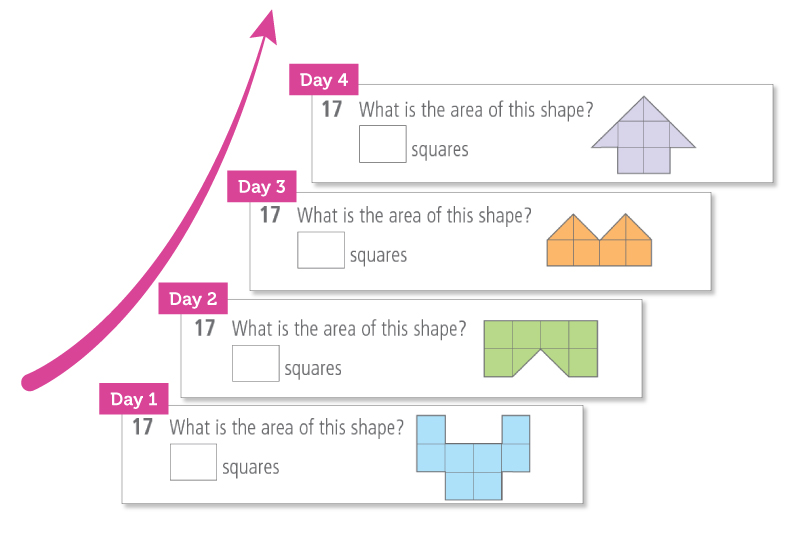Articles & Videos
Think Mentals: More than meets the eye
Categories
Subscribe to our newsletters
Receive teaching resources and tips, exclusive special offers, useful product information and more!
Think Mentals: More than meets the eye
Think Mentals 16/10/24

Packed with unique features and carefully scaffolded questions, Think Mentals is so much more than your average drill and practice mental computation program.
Here’s how our friendly approach to mental computation gives your students the best opportunity to become fluent in day-to-day maths problems.
Strategies are the hero
Think Mentals takes a unique approach to mental maths. It provides you with the tools to explicitly teach students effective strategies to break tricky maths problems into friendly, manageable chunks.
Think Mentals’ strategies are how-to guides for making maths calculations easy. Each strategy is broken down into a simple 2- or 3-step sequence that students follow to mentally solve maths problems. Throughout the year, the strategies use the same friendly and consistent language so that they are easy for students to understand.
Tip: If you have Think Mentals Digital, use the strategy video and the scaffolded slideshow to step through worked examples. Or if you have Think Mentals Student Workbooks, use the projectable strategy snapshots, available from thinkmentalsanswers.com.au, to demonstrate the worked examples.
How does Think Mentals work week to week?
Each year level* contains 32 weeks of work known as units.
In Unit 1, students are introduced to the basics of using mental computation strategies.
In Units 2–19 students learn, practise and are assessed on the Think Mentals strategies. Each of these units follows the same weekly structure:
- Day 1: Learn a new mental computation strategy and practise using that strategy with the carefully graded questions.
- Days 2–4: Complete a range of questions each day that consolidates understanding of the week’s strategy, revises previous strategies and targets general maths content.
- Day 5: Complete an assessment that tests proficiency in the week’s strategy, and includes revision and general content questions.
From Unit 20 onwards, the focus shifts from explicit teaching of the strategies to revision and consolidation. Days 1–4 revise and consolidate the Think Mentals strategies, as well as target general maths content. On Day 5 students complete an assessment of the week’s work. A weekly Think Box is a fun and challenging activity for students to apply their mental computation strategies to help solve a problem.
Tip: View the Strategy Overview Guide to see when strategies are introduced or revised within each year, and how they build from Year 1 to 6.
A closer look: carefully scaffolded questions
Within a typical day, and across the course of the week, questions have been carefully scaffolded to optimise students’ application, practice and fluency in mental computation.
Within a day
A typical day consists of practice, revision and general content questions.
- Practice – These questions are best solved using the strategy taught that week.
- Revision – These questions give students the opportunity to apply strategies taught previously, and consolidate those skills and knowledge.
- General content – These questions contain number, word and illustration-based problems covering a range of general maths concepts and operations.
Across the week
Within the general content questions, the same targeted concepts are repeated throughout the week, and the level of difficulty for each targeted concept generally increases as the week progresses.
For example, in Unit 24 of Think Mentals 4, question 17 of each day focuses on area. The complexity of the question increases through the week, with Day 4 being the most complex.

Tip: You can challenge your students even further by having them time themselves as they complete each day’s set of questions. Have students jot down their times on a piece of paper or use the dedicated ‘My time’ section in the Think Mentals workbooks at the bottom of each day’s set of questions.
Weekly assessment
Day 5 of each unit is the weekly assessment. The questions in the assessments are divided into two sets:
- The first set of questions relates to the Think Mentals strategies (either the focus strategy of the unit, or revision of a variety of strategies).
- The second set covers general maths concepts and operations.
Tip: If you use Think Mentals Digital, the activity and assessment results are automatically collated in student and class portfolios. If you use Think Mentals Student Workbooks, ensure students record their results in the Student Assessment Profile at the back of the workbook after each assessment day is marked to collate a snapshot of their performance.
Like the questions themselves, the results are broken into two sets so you can see how students understood and applied the Think Mentals strategies, or performed with general maths concepts and operations.
That’s Think Mentals in a nutshell! We’ve taken care of the hard work so that you and your students can enjoy a carefully scaffolded and highly effective mental computation program.
Explore what Think Mentals has to offer firsthand. Sign up to a free trial of the digital option (Years 2–6), or explore sample pages from the workbooks Year 1, Year 2, Year 3, Year 4, Year 5, Year 6.
*Features may differ slightly across Years 1 to 6.